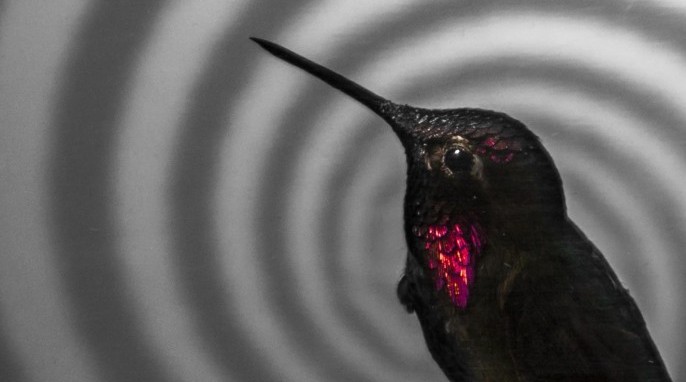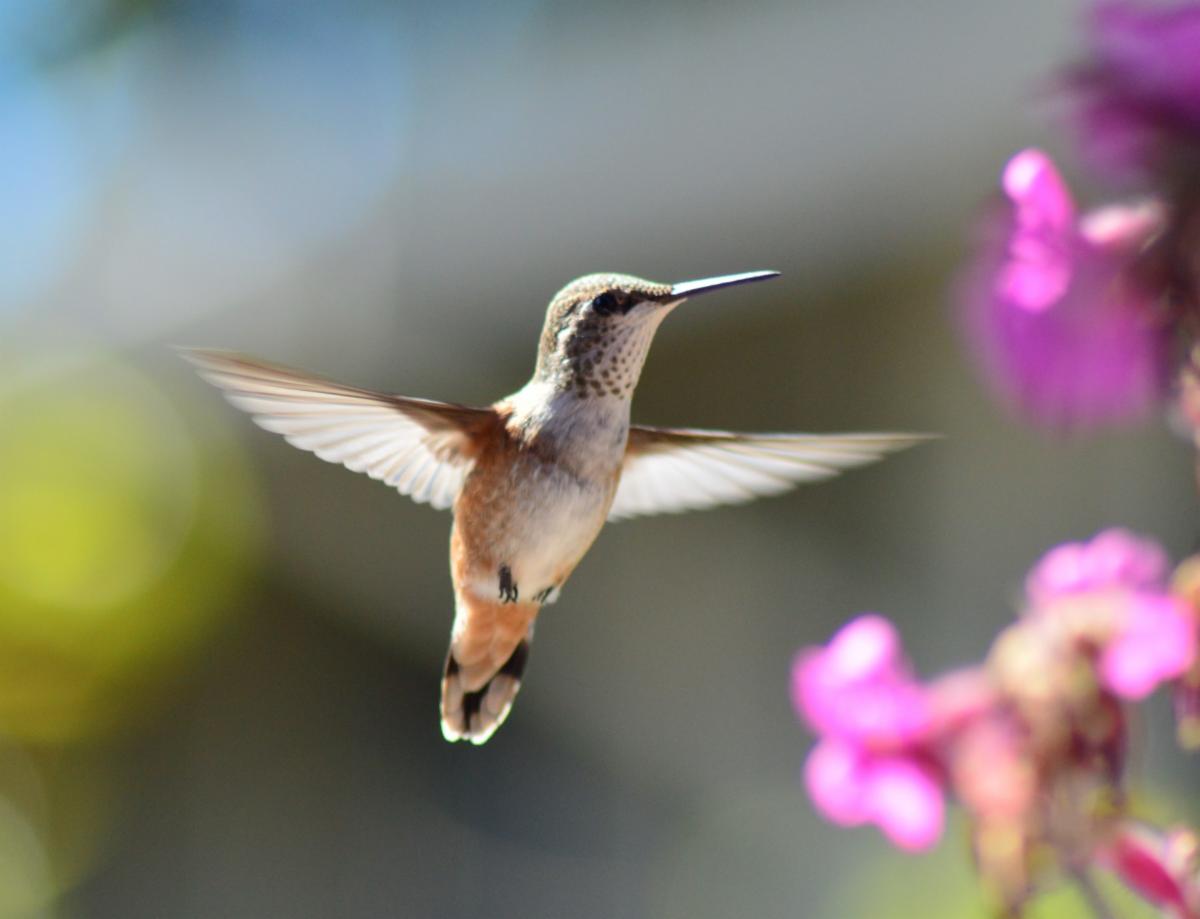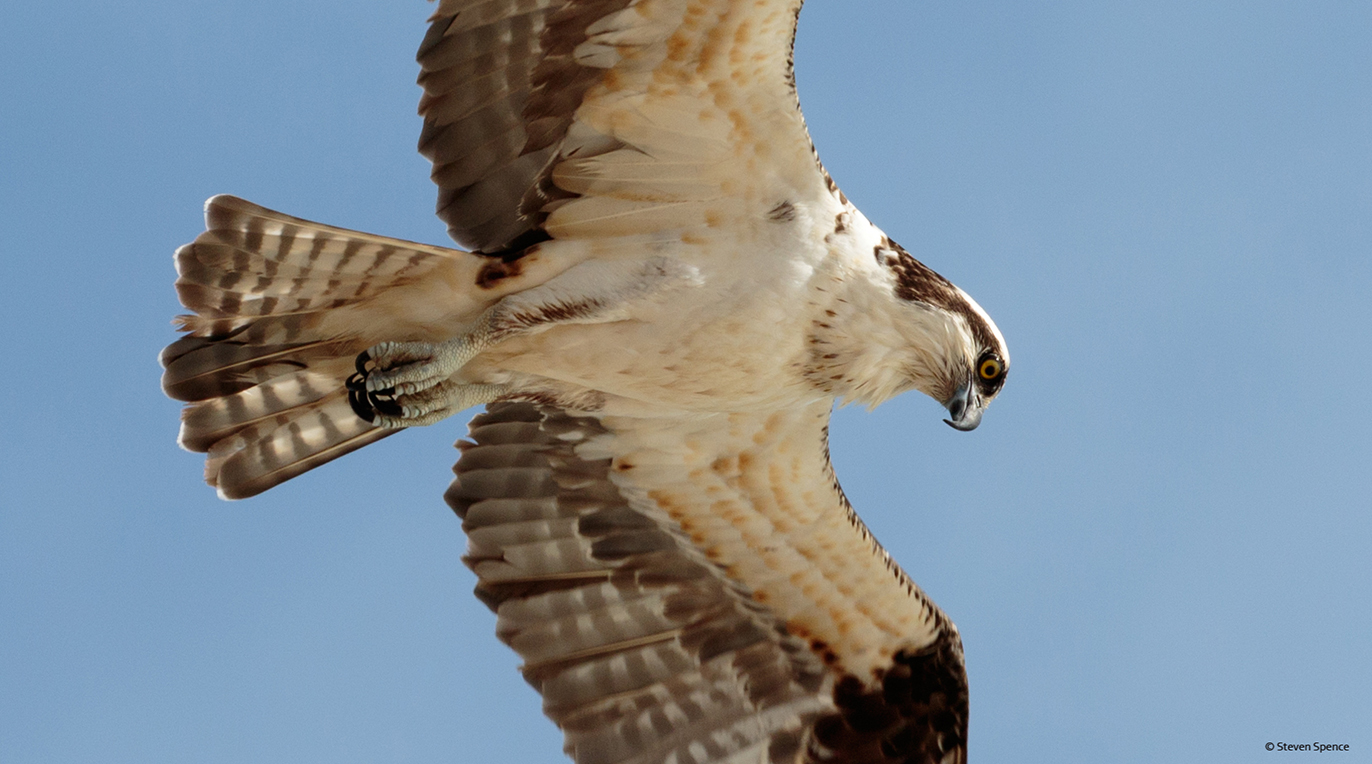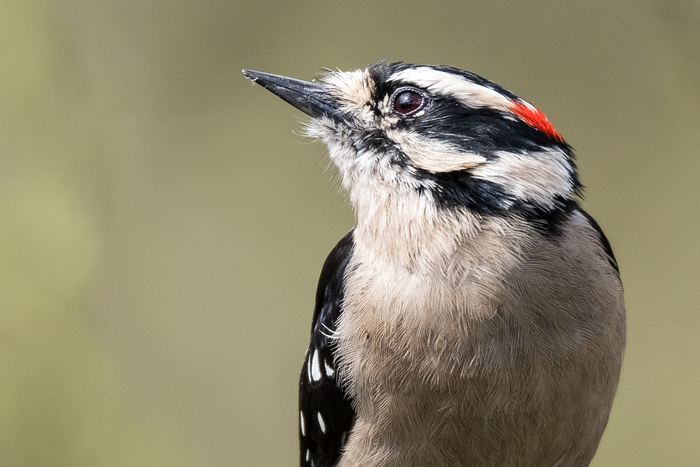A hummingbird’s ability to hover in place can be easily disrupted by tricking the bird’s brain. Our brains can be tricked in a similar way.
Watching a hummingbird hover and maneuver can be mesmerizing. Hovering in place, however, isn’t as easy as it might appear, according to new research from University of British Columbia (UBC). UBC has found that a hovering hummingbird needs a completely stationary visual field.
Zoologists Benjamin Goller and Douglas Altshuler discovered this quirk in the tiny bird’s hovering skills by offering them sugar water from a fixed hummingbird feeder. The researchers then projected a moving spiral and striped pattern in front of the free-flying hummingbirds. This is the first time researchers have directly measured the effect of moving visual patterns on free flight in birds. (We are assured that no hummingbirds were harmed in the experiment).
The results showed that even minimal background pattern motion caused the hummingbirds to lose positional stability and drift. “We were very surprised to see how strong and lasting the disruption was — birds with hovering and feeding abilities fine-tuned to the millimeter were off the mark by a centimeter,” said Goller. “We think the hummingbird’s brain is so precisely wired to process movement in its field of vision that it gets overwhelmed by even small stimuli during hovering.”
RELATED: AMAZING HUMMINGBIRDS: DANCING IN THE AIR
Goller and Altshuler tried giving the birds time to get used to the moving background, but that didn’t help. The birds were still unable to hover in place while the background was moving. Projecting a combination of moving and stationary patterns in front of the birds made no difference either, although birds were able to regain some stability.
The hummingbirds’ reactions to moving background images are rather similar to our own. “Our brains interpret visual motion based on our current circumstances,” says Altshuler. “We react very differently to sideways movement in a parked car than [we do] while driving. Now we want to investigate how birds use vision during transitions from mode to mode, for example as they move from hovering to forward flight.”
These findings are published in the Proceedings of the National Academy of Sciences.
Image © 2014 Matthew Shain




